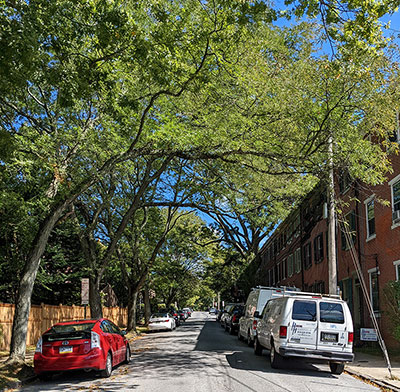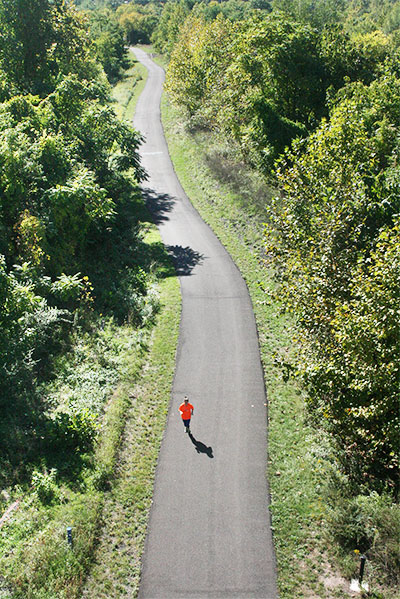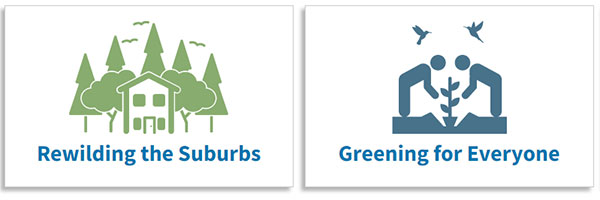Woodlands and Tree Protection eTools and Planning Guides
eTools
The following eTools provide guidance for the protection and expansion of trees and woodlands.

Trees are an important tool in mitigating urban heat islands.
Street Trees
Trees planted along streets provide many benefits to communities when thoughtful planning, careful maintenance, and public awareness support their health and longevity. View eTool
Urban Heat Island Mitigation
Heat islands are urbanized areas with higher air and surface temperatures than outlying areas. This is caused by concentrated impervious surfaces and limited greenery, and can have environmental, energy, economic, and health impacts. View eTool
Urban Green Spaces
Urban green spaces are urban spaces with significant vegetation coverage that provide environmental quality, economic value, and social well-being. View eTool
Woodland Conservation
Woodlands refer to large continuous or contiguous stands of trees and forested areas. Woodlands are typically located on larger parcels of land and often complement other environmental features such as wetlands, riparian buffers, and steep slopes. View eTool

Greenways
Natural Resource Protection Standards
Comprehensive natural protection standards are implemented through municipal ordinances to protect, conserve, and enhance a full array of natural resources. View eTool
Riparian Buffers
Riparian buffers are vegetated areas of land adjacent to a pond, lake, stream, creek, river, or wetland, which forms the transition between aquatic and terrestrial environments. The eTool includes links to scientific studies identifying optimum buffer widths, documenting the many benefits of riparian buffers, and supporting the use of native forest species. View eTool
Greenways
A greenway is a corridor of undeveloped land, usually along a stream or ridgeline, which creates a continuous corridor, providing environmental, wildlife habitat, water resources, and possible recreational benefits. View eTool
Landscaping with Native Plants
Using native plants for landscaping promotes a sustainable landscape and plays a critical role in protecting against the spread of invasive plants. View eTool
Planning Guides
The following planning guides and publications can be used to enhance tree and woodland protection.
Conservation Subdivision Design Guide
This guide provides design and technical guidance on how to develop ordinances for developments that preserve natural resources and scenic views while creating high quality places for people to live. The preservation of large areas of open space can provide for the protection of significant wooded areas on a development site.
50 Ways Your Community Can Protect Our Planet
This booklet features 50 ways your community can help protect earth's resources and ensure a resilient environment that supports healthy living year-round. Rewilding the Suburbs includes a sections on forest restoration and Greening for Everyone includes sections on street trees and tree towns.


